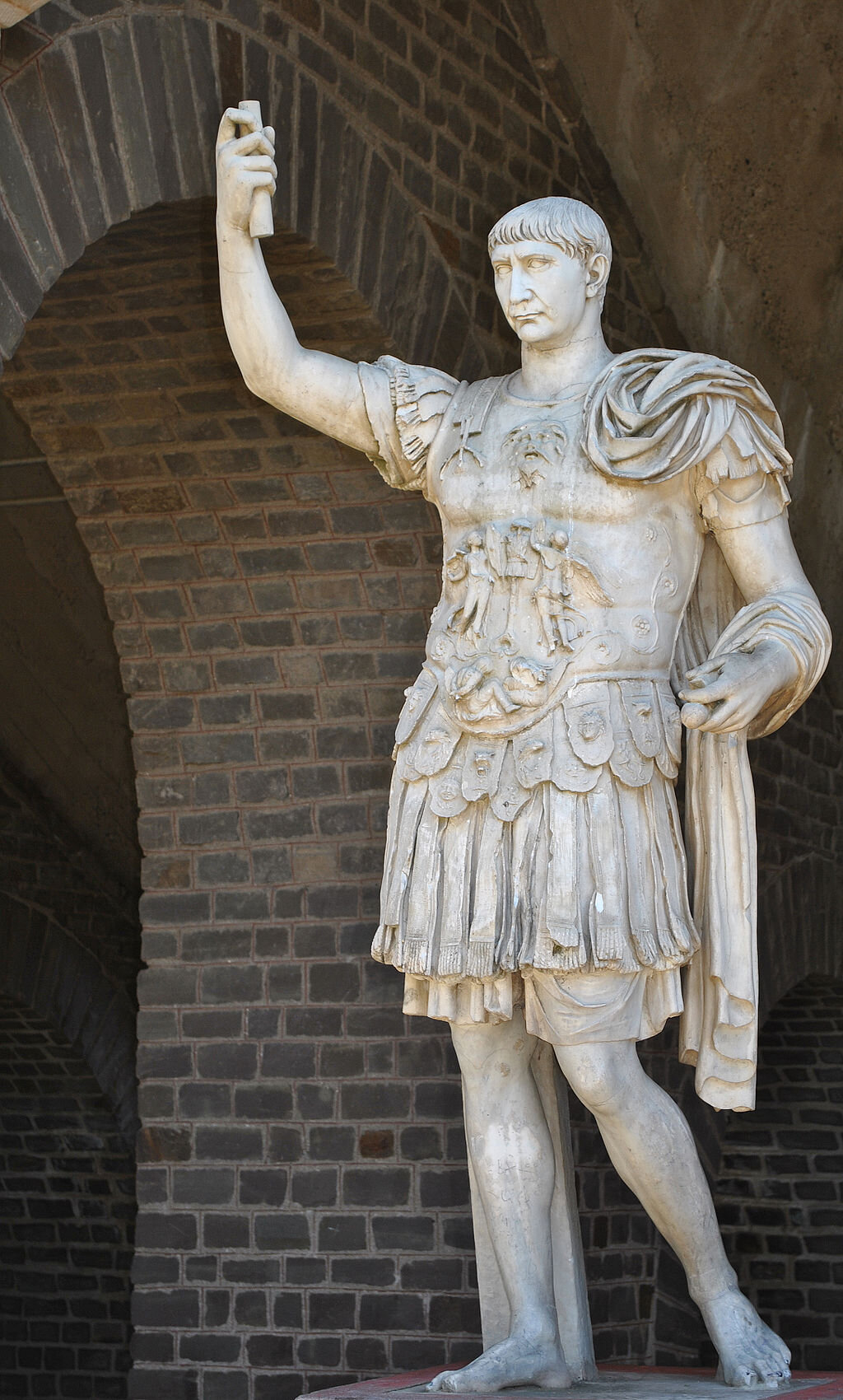Emperor Trajan led the Roman Empire from 98 to 117 AD, and played an important role in maintaining and expanding the Roman Empire. Here, Dylan Wardle looks at what he did and considers whether he was a good or bad emperor.
Trajan, in military clothes, in the Xanten Archaeological Park. Source: Hartmann Linge, available here.
His Rise To Power
The great Roman Empire began in 27 BC and was the post-republican period of ancient Rome. Since its formation, it had undergone many changes and vast amounts of hardship. War, turmoil, plague, and betrayal; Rome had experienced it all.
Most people are aware of the Roman Empire and what it consisted of. Many know of its aesthetic and agricultural expertise and that it was one of the largest empires in history.
Very few, however, know just how big the empire was. At the height of its power, it reached from Scotland to the Caspian Sea. The Roman legions and their wartime capabilities were feared by many.
But who was it exactly that allowed Rome to become such a superpower? Who ruled at the height of Rome’s potential?
The name you are looking for is Marcus Ulpius Trajanus, more commonly known as Emperor Trajan. Born on September 18, 53 AD, Marcus eventually spent his early life serving the Roman Empire by participating in various battles on the empire’s frontier.
It wasn’t until the year 89 AD when Marcus marched upon Rhine. His reasons for the march were paramount: to assist Domitian (the current emperor) in his fight against Saturninus (a German rebel governor).
It was soon after this event that Marcus was granted the honor of praetor and then in 91 AD was made consul.
5 years after, Domitian was assassinated and Nerva (Marcus’ adoptive father) became ruler. Nerva then proceeded to make Marcus Ulpius Trajanus governor of northern Germany. Marcus was eventually named Nerva’s successor and so, on the day of Nerva’s death, Marcus became emperor Trajan.
His Reign
Emperor Trajan ruled for a total of 19 years and was admired by many and was observed to be Rome’s kindest and wisest emperor. He encouraged the construction of formidable roads, aqueducts, and harbors as well as implementing the alimenta. The alimenta, which was a Roman welfare program, was inaugurated soon after the Dacian wars. It implemented many necessities for the empire’s recovery after the wars and provided aspects such as funds, food and improved education to children and orphans. Most of this was paid for via the spoils of war.
He was also known for his conquests to expand the empire to the East. The Roman Empire witnessed 6 years of peace and tranquility after the Second Dacian War. That was until the year 114 AD, which started the war against the Parthian dynasty. But what started this final conflict before Trajan’s death? What instigated a brutal and intemperate series of events that would last 3 years?
We must first turn our attention to Armenia, which is located in South Caucasus. At the time, it was a Roman buffer state. The Parthian dynasty placed one of their own on the throne, which aggravated the opposing side.
Trajan, in the year 114 AD, sent his troops to Armenia for an all-out invasion and was soon named a Roman province.
The following year, he proceeded to invade Northern Mesopotamia (which is now commonly known as part of the Middle East) and claimed it as another Roman province. It then wasn’t long until the Romans captured Ctesiphon, the Parthian capital.
After many more conflicts of the war, followed by a few rebellions, Trajan died in the year 117 AD on his return to Rome. He died of a stroke but many at the time suspected poison.
A few years prior to this (specifically in the year 112 AD) Trajan’s forum was formed. It was 300 meters in length and 185 meters wide. It was here that Trajan’s column was constructed which was the resting place of the emperor.
Trajan’s column was to commemorate his 2 victories against the Dacians.
Good Or Bad?
It is difficult to say whether or not Trajan was a good or bad emperor. He accomplished some spectacular feats and sought to see Rome reach a cosmic level of power. Despite the multiple wars he found himself in, the proceeds all went towards better roads and bridges and even harbors from modern-day Spain to the Balkans.
He was an extremely generous emperor too, as he even increased the total amount of grain handed out to peasants. One act of generosity that caught most off guard was that he remitted the gold sent to emperors on their accession back to the people and cities from whence it came.
He may have come across as kind and wise but nonetheless, he was as strict as they come. He had a true burning passion for war and thrived on battle, especially during his early years as an army commander.
After the Second Dacian War, when Trajan returned to Rome, he held competitions between 10,000 gladiators for all to watch.
However, Trajan had no child and so there was no heir to the throne. He had taken a similar approach to his father and adopted a child, which was his cousin’s son Hadrian.
So, what do you think? Was Trajan a good emperor of Rome or a bad one? Let us know below
References
National Geographic: https://www.nationalgeographic.org/encyclopedia/trajan/
World History Encyclopedia: https://www.worldhistory.org/trajan/
Britannica: https://www.britannica.com/biography/Trajan
New World Encyclopedia: https://www.newworldencyclopedia.org/entry/trajan
Trajan- The Best Emperor #13: https://www.youtube.com/watch?v=-BagdB-pqno







